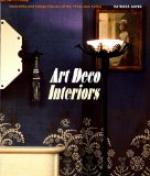Sir Christopher Wren, architect, with Grinling Gibbons, designer and wood-carver, were chiefly responsible for the beautifully elaborate mouldings on ceilings and walls, carved from oak and used for forming large panels with wide bevels, into which were sometimes set tapestries.
The Italian stucco mouldings were also used at that time. The fashion for elaborate ceilings and sidewalls had come to England via Italy and France. The most elaborate ones of those times were executed under Charles II and William III, the ceilings rivalling those of Louis XIV.
William and Mary (1687-1702) brought over with them from Holland, Dutch cabinet makers, which accounts for the marked Dutch influence on the Mahogany Period, an influence which shows in a Dutch style of inlaying, cabriole legs and the tulip design. A sure sign of the William and Mary period is the presence of jasmine, as designed for inlaying in bone, ivory or hollywood.
Lacquer came to England via Holland, the Dutch having imported Chinese workmen.
The entire Mahogany Period, including the Adam brothers, used the shell as a design and the backs of settees resembled several chair backs places side by side.
A feature of the Mahogany Period were the knife-boxes and cases for bottles, made of mahogany and often inlaid, which stood upon pedestals constructed for the purpose, at each side of the sideboard. Later the pedestals became a part of the sideboard. The urn-shaped knife-boxes were extremely graceful as made by Adam, Chippendale and Heppelwhite.
It is impossible to clearly define all of the work of the cabinet-makers of the mahogany or any other period, for reasons already stated. So one must be prepared to find Chippendale sofas which show the shapes originated by him and, also, at times, show Louis XVI legs and Louis XV outline. Chippendale’s contemporaries were quite as apt to vary their types, and it is only by experience that one can learn to distinguish between the different artists, to appreciate the hall marks of creative individuality.
The early Chippendale was almost identical with Queen Anne furniture and continued the use of cabriole leg and claw and ball feet. The top of the Chippendale chairs were bow-shaped with ends extending beyond the sides of the back and usually turned up. If turned down they never rounded into the sides, as in the case of Queen Anne chairs. The splats have an upward movement and were joined to chair seats, and not to a cross-rail. They were pierced and showed elaborate ribbon and other designs in carving. There were, also, “ladder backs,” and the Chinese Chippendale chairs, with lattice work open carved and extending over entire backs. The characteristic Chippendale leg is cabriole with claw and ball foot.
The setting for Chippendale furniture was a panelled dado, classic mantelpiece, architraves and frieze, and stretched over sidewalks, above dado, was silk or paper showing a large pattern harmonising with the furniture. The Chinese craze brought about a fashion for Chinese wall papers with Chinese designs. This Chinese fashion continued for fifty years.




